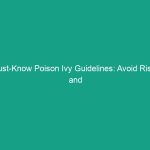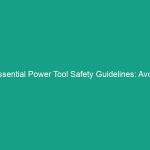Introduction
Good morning team,
Today, we are going to talk about an incredibly important topic: Essential Power Line Safety Guidelines. As many of you know, working near power lines can pose serious risks, not only to our Safety but also to our colleagues and the public. Understanding these guidelines is crucial for preventing accidents and ensuring a safe working Environment.
Why is this topic important? Each year, accidents involving power lines result in severe injuries and fatalities. By being aware of the potential Hazards and how to mitigate them, we can protect ourselves and each other. Let’s dive in!
Understanding Essential Power Line Safety Guidelines
Essential Power Line Safety Guidelines are a set of practices designed to keep workers safe when working near or with power lines. These guidelines address the risks associated with Electrical Hazards, including electrocution, falls, and equipment damage.
Understanding these guidelines is vital because they directly impact our daily operations. For example, failing to adhere to these safety protocols can lead to equipment malfunctions or, worse, serious injuries. One common misconception is that power lines are only a danger when they are live; in reality, they can pose a risk even when they appear inactive.
Key Hazards, Risks, and Safety Considerations
When working around power lines, several specific hazards and risks need to be taken into consideration:
- Electrocution: Coming into contact with live wires can result in severe injury or death.
- Falls: Workers can fall when working at heights near power lines.
- Equipment Damage: Heavy machinery can come into contact with power lines, causing outages and safety hazards.
- Inadequate Training: Lack of training on Electrical Safety can lead to poor decision-making.
Ignoring these safety protocols can have real-world consequences. For example, a worker who fails to maintain a safe distance from a power line could experience a life-threatening electric shock. It’s critical to recognize these risks and act accordingly.
Best Practices, Procedures, & Actionable Advice
To ensure safety while working near power lines, here are some vital Best Practices and Procedures to follow:
1. Maintain Safe Distances
Always keep a safe distance from power lines. The National Electrical Safety Code recommends at least 10 feet of clearance from overhead power lines, but this distance may vary depending on the voltage. Always check company policies for specific distances.
2. Use Proper Equipment
Ensure that all tools and equipment used near power lines are rated for electrical work. Non-conductive tools should be used whenever possible, and insulated ladders are a must when working at heights.
3. Wear Personal Protective Equipment (PPE)
Always wear appropriate PPE, including hard hats, safety glasses, and insulated gloves. This gear is designed to protect you from electrical hazards.
4. Follow Lockout/Tagout Procedures
Before beginning any work on circuits or equipment near power lines, ensure that all power sources are properly locked out and tagged out. This procedure prevents accidental energization and protects workers.
5. Get Trained Regularly
Regular training sessions on power line safety protocols are essential. This training should cover how to identify hazards, what to do in case of an emergency, and the proper use of Safety Gear.
Case Study: A Lesson Learned
In 2022, an electrical contractor was severely injured while attempting to trim trees near power lines. Ignoring safety protocols, he used a metal ladder, which made contact with a live wire. This incident underscores the importance of adhering to safety guidelines and highlights how quickly situations can escalate when Safety Measures are overlooked.
Regulations, Standards, and Compliance
Compliance with safety Regulations is not just about following rules; it’s about protecting lives. The Occupational Safety and Health Administration (OSHA) has established regulations that specifically address working near power lines, including:
- osha Standard 1926.1408: This standard outlines requirements for equipment working near power lines.
- OSHA Standard 1910.333: This standard discusses electrical safety-related work practices.
Adhering to these regulations is critical because they provide guidelines on how to minimize risks and ensure employee safety. Remember, compliance not only protects you but also safeguards your colleagues and the community.
Employee Engagement & Discussion
As we wrap up this Toolbox Talk, I’d like to open the floor for discussion. Here are a few questions to think about:
- What safety challenges have you encountered related to power line work?
- Have you ever witnessed a near-miss incident? What can we learn from it?
- How can we improve our current safety practices around power lines?
Please feel free to share your thoughts and experiences. Remember, safety is a shared responsibility, and your input is invaluable.
Conclusion & Key Takeaways
In conclusion, understanding and implementing Essential Power Line Safety Guidelines is crucial for maintaining a safe work environment. Remember the key points we discussed today:
- Maintain safe distances from power lines.
- Use appropriate equipment and PPE.
- Follow lockout/tagout procedures.
- Participate in regular training.
Let’s commit to applying these practices every day, ensuring that we all go home safe and sound. Thank you for your attention and your commitment to safety. Together, we can create a safer workplace!


